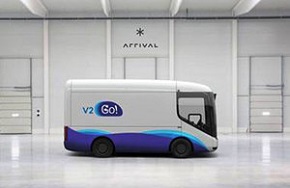Vehicle-to-grid (V2G) technologies
In February 2018, the Department for Transport announced a new £30 million investment in vehicle-to-grid (V2G) technologies that have been described as ‘revolutionary’. It is hoped that the new technologies will unlock the potential for electric vehicles to help power homes, as electricity can be delivered back to the smart grid.
As part of the government’s Industrial Strategy, set out in the Automotive Sector Deal, funding has been awarded to 21 V2G projects including EDF Energy’s V2GO scheme. This scheme aims to demonstrate how energy stored in electric vehicle batteries could be ‘borrowed’ during peak hours by the electricity system, and then be recharged during off-peak times.
It is hoped that by using electric vehicles in dense urban areas like Oxford, local emissions will be significantly reduced and air quality improved. The V2GO scheme is a large scale demonstration of V2G charging using 100 electric fleet vehicles (cars and vans) from a number of organisations.
The project will develop, trial and evaluate potential business models for fleet operators’ use of electric vehicles and their suitability for vehicle to grid (V2G) charging.
The assessment process for the funding has been concluded by Innovate UK, with almost £30m of government money being granted to industry-led collaborative R&D for up to 70% of project costs.
Transport Minister, Jesse Norman said:
“As the number of electric vehicles grows and their battery capabilities increase, there is a huge opportunity for them to make a significant contribution to a smart grid.
“These projects are at the cutting edge of their field. Just like the visionary designs of Brunel and Stephenson in transport, they could revolutionise the ways in which we store and manage electricity, both now and in the future.”
Dan Bentham, Head of R&D, Smart Customers, EDF Energy said:
“Electric vehicles will play an important role in the future of UK energy and its economy. They will have a beneficial impact on the environment by reducing emissions and improving air quality.
“Through our research, EDF Energy will use new technologies, business models and smart systems to make low carbon transport, and the infrastructure and market conditions needed for its success, a reality.”
(Ref. https://www.gov.uk/government/news/30-million-investment-in-revolutionary-v2g-technologies)
[edit] Related articles on Designing Buildings Wiki
Featured articles and news
Infrastructure that connect the physical and digital domains.
Harnessing robotics and AI in challenging environments
The key to nuclear decommissioning and fusion engineering.
BSRIA announces Lisa Ashworth as new CEO
Tasked with furthering BSRIA’s impressive growth ambitions.
Public buildings get half a million energy efficiency boost
£557 million to switch to cleaner heating and save on energy.
CIOB launches pre-election manifesto
Outlining potential future policies for the next government.
Grenfell Tower Inquiry announcement
Phase 2 hearings come to a close and the final report due in September.
Progress from Parts L, F and O: A whitepaper, one year on.
A replicated study to understand the opinion of practitioners.
ECA announces new president 2024
Electrical engineer and business leader Stuart Smith.
A distinct type of countryside that should be celebrated.
Should Part O be extended to existing buildings?
EAC brands heatwave adaptation a missed opportunity.
Definition of Statutory in workplace and facilities management
Established by IWFM, BESA, CIBSE and BSRIA.
Tackling the transition from traditional heating systems
59% lack the necessary information and confidence to switch.
The general election and the construction industry
As PM, Rishi Sunak announces July 4 date for an election.
Eco apprenticeships continue help grow green workforce
A year after being recognised at the King's coronation.
Permitted development rights for agricultural buildings
The changes coming into effect as of May 21, 2024.






















